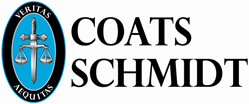Article via:
“With Goldman Sachs recently agreeing to pay $5.1 billion to settle claims related to its role in the 2008 mortgage scandal, the firm became the latest big Wall Street bank to reach a deal with the U.S. government. As part of the settlement, $1.8 billion is to be set aside for programs to help homeowners who are still trying to fend off foreclosure?
Yet nearly seven years since the Great Recession ended, the question remains: How well have these anti-foreclosure programs worked? It depends on whom you ask and where they live.
Back-stopping the nation’s banking system was the top federal priority during the height of the 2008 financial crisis. But out of the $475 billion that Congress authorized for the Troubled Asset Relief Program (TARP), $46 billion was supposed to help millions of struggling families avoid foreclosure.
A subsequent 2014 settlement between prosecutors and Bank of America (BAC) netted an additional $16.6 billion, of which then-Attorney General Eric Holder said $7 billion would go to “provide relief to struggling homeowners, borrowers and communities affected by the bank’s conduct.”
All told, between the programs administered through the Treasury Department — like the Home Affordable Modification Program (HAMP) — and the pools of money committed by Wall Street banks as part of their settlements, tens of billions of dollars have been set aside to assist families facing foreclosure by modifying their mortgage terms so they can remain in their homes.”
